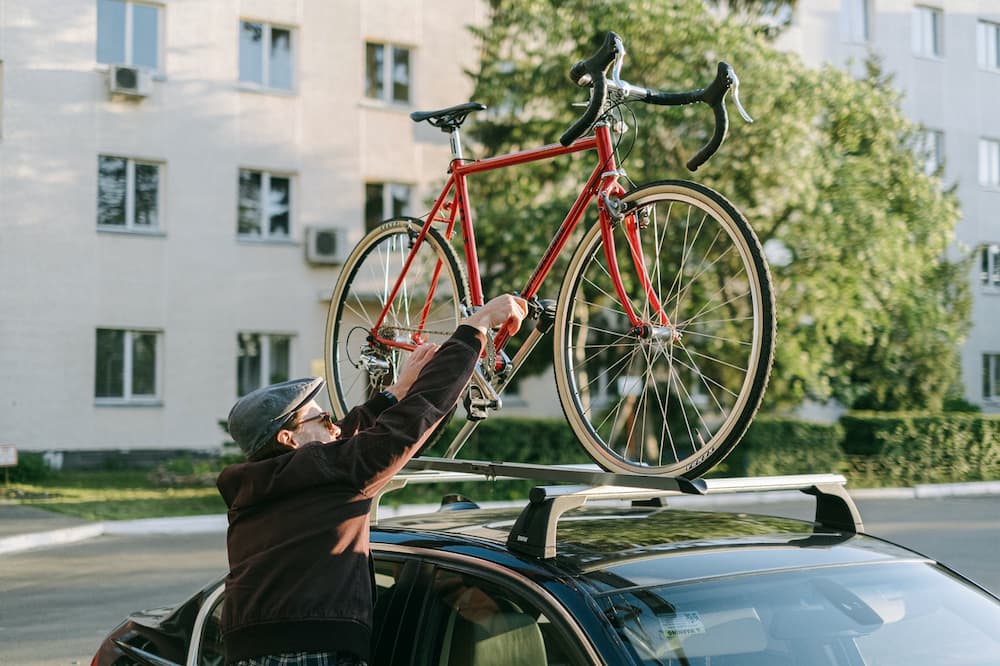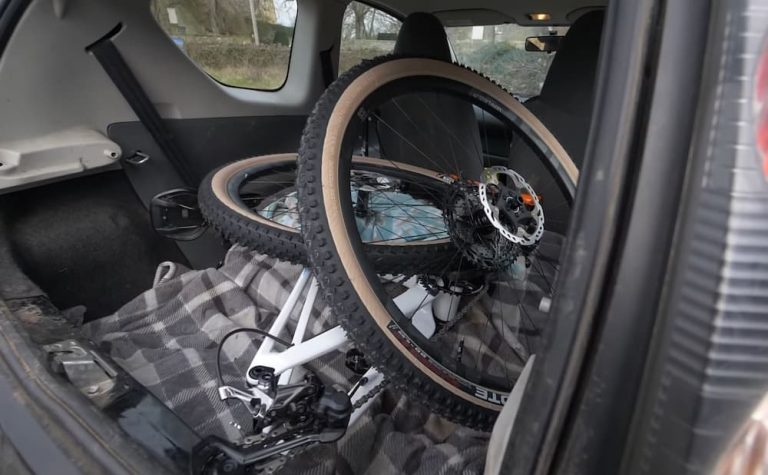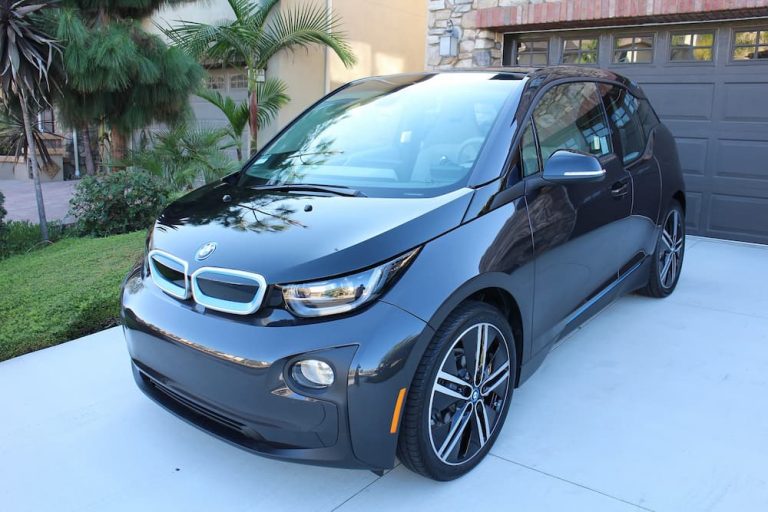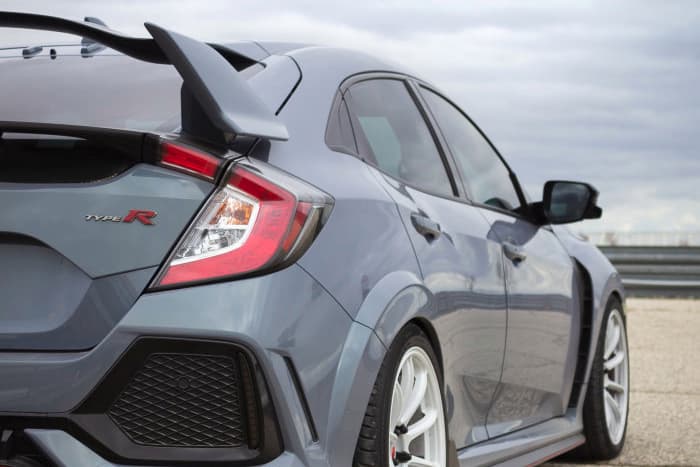How Fast Can You Drive With A Bike Rack?
Exploring new trails and paths has always thrilled me, especially from the perspective of a bike saddle. But transporting your bicycle can be a puzzle. You’ve got your bike rack fitted and ready to hit the road. But wait – how fast can you safely drive with that rack loaded? This isn’t a trivial question. It’s a critical safety concern. Imagine cruising down the highway, unsure if your speed jeopardizes your precious cargo or even your safety.
That’s where this guide comes in. I’ve explored every nook and cranny of this topic to bring you clarity and peace of mind. From understanding how bike racks impact your vehicle’s performance to navigating different types of racks and their specific speed limits, this article is your roadmap to safe and efficient bicycle transportation. Whether you’re a weekend warrior or a daily commuter, you’ll find essential insights to ensure your cycling adventures start and end safely.
Contents
How Fast Can You Drive With A Bike Rack?
Generally, the rule of thumb is that you shouldn’t go faster than 55 – 65 mph with a bike rack. However, this isn’t a rigid rule. How fast you can go with a rack depends on many variables.
It’s also wise to be aware of any legal speed limits specific to carrying loads, such as bike racks, as these can vary by region.
The type of rack, where it’s mounted, the type of vehicle, how many bicycles the rack can hold, and whether the car carries bikes on the bike rack are some variables that must be considered when determining the maximum allowable speed.
Remember to consult your bike rack’s owner’s manual for any speed specifications unique to the manufacturer. Also, consult your vehicle’s manual for manufacturer-specific recommendations or warnings about driving speeds with bike racks. The maximum speed for one type of rack may not be the same for another.
While we understand the adrenaline rush you get from speeding your car across the open road, it’s important always to put safety first. Follow the speed laws on any road to protect yourself and others.
Related reading: Can Car Bike Racks Get Wet?
Speed Limits For Different Types of Bike Racks
There are several types of bike racks on the market. Each type of bike rack affects your vehicle’s performance in many ways. This includes the wind resistance factor, especially for roof racks, which can significantly alter the vehicle’s aerodynamics and fuel efficiency.
The material of the bike rack, such as aluminum or steel, also plays a role in its weight and stability, influencing the recommended driving speed.
The most popular types are listed below:
- Hitch Rack
- Roof Rack
- Spare Tire Rack
- Trunk Rack
Among these, aerodynamic bike racks are available, designed to minimize their impact on vehicle speed and fuel consumption.
Hitch Rack
Hitch racks are mounted on the rear end of your vehicle. They’re very sturdy and can hold a large number of bicycles. Always check your vehicle’s tow bar rating to ensure it can handle the combined weight of the rack and bicycles, as this affects speed and safety.
When you mount a bike rack on the rear of your car, you can drive your vehicle up to 65 mph in perfect road and weather conditions. However, if it’s raining outside or you’re driving on a bumpy road, you should reduce the speed of your vehicle. If it’s raining outside or going on a bumpy road, you shouldn’t exceed the 55-mph mark on your speedometer.
Hitch racks also come in two different categories. You can go up to 65 mph with a platform carrier, while with a hanging hitch carrier, you can go 55 mph at best, even if the road and weather conditions are perfect.
Roof Rack

This type of bike rack is mounted on top of the vehicle. It’s one of the market’s most reliable and practical bike racks. It’s one of those racks that does not restrict a vehicle from adhering to low-speed limits.
A vehicle with a roof rack can reach speeds up to 80 mph, provided road, weather, and traffic conditions are favorable. It’s important to note that roof bike racks are comparatively heavier, affecting the vehicle’s acceleration and braking performance. Such additional weight can also influence your vehicle’s stability control system, especially in adverse driving conditions. You must remember these two things to drive safely with a roof rack.
Spare-Tire Rack
Spare tire bike racks are ideal bike racks for SUVs and off-road vehicles. Like a hitch rack and trunk rack, a spare tire rack is anchored to the vehicle’s rear with the spare tire. Unlike the other bicycle carriers, the spare tire carrier isn’t permanently mounted to the car, making it much easier to attach and install.
However, the carrier isn’t efficient if you plan to drive your vehicle fast. A vehicle equipped with a spare wheel carrier should not exceed 50 mph. Going beyond this speed is dangerous as it increases the chances of the carrier getting damaged or detached, leading to a catastrophic accident.
Related reading: Best Spare Tire Bike Rack Reviews & Buying Guide
Trunk Rack
As the name suggests, the trunk rack is attached to the trunk of a vehicle with straps that hold it in place. This type of rack is lightweight, and people have the misconception that vehicles with trunk racks can go faster than vehicles with other bike carriers.
But in reality, just the opposite is true. Because of their light weight, trunk racks aren’t as stable as most other rack types. Therefore, vehicles should slow down to avoid damage.
As a rule, motorists shouldn’t drive faster than 55 mph. Otherwise, the vehicle and bike rack can be damaged, eventually leading to an accident.
Frequently Asked Questions
Are Bike Racks Safe to Use At High Speeds?
Yes, when properly mounted, bike racks are very safe to use, even at high speeds. An incorrectly mounted bike rack can cause the bicycle to come loose in the middle of the road and cause an accident. Therefore, bike racks must be mounted appropriately.
Properly mounted bike carriers are one of the safest and most practical tools for transporting bicycles from one place to another.
Are Bike Racks Safe On Highway?
Yes, bike racks are very safe, even on highways. Proper mounting the rack is the key to safely using bike racks (whether on the highway or any other road). Make sure your rack is securely attached to your vehicle. Follow the prescribed way to mount the bike rack.
For extra stability, you can tie the wheels of your bicycle with a rope or a bungee cord. If you follow this, you won’t have to worry about your bike coming off your vehicle in the middle of the highway.
One thing that often causes concern is the noise and vibration that the bike rack causes. Always inspect any vibrations that seem out of the ordinary. If you notice an unnatural shaking and noise, you should slow down and see if the noise subsides. If it does, you should maintain the lower speed for the rest of the ride. If not, the bike rack may not be adequately secured.
Related reading: Can You Use A Bike Rack for a Wheelchair?
Final Thoughts
As I reflect on the insights shared in this article, it’s clear that while bike racks do impose a limit on our driving speed, they offer significant convenience for cyclists. Understanding the bike rack speed limit is more than adhering to a number. It involves a comprehensive evaluation of the type of rack used, the vehicle’s make, the rack’s load, and the manufacturer’s guidelines.
In my experience, the typical range of 55 to 65 mph is a prudent benchmark, but adjusting according to your specific setup is crucial. Loading multiple bicycles, for instance, necessitates a more cautious approach to account for the additional weight and its impact on the vehicle’s braking capacity.
Moreover, the road, weather, and traffic conditions play a critical role in determining a safe driving speed. My experience has taught me that safety must always come first, even over the excitement of speed. A well-mounted bike rack, after all, is an asset that ensures our bicycles arrive safely at our destination. Thus, respecting the bike rack speed limit isn’t just about compliance; it ensures safe, responsible cycling and motoring.
For long-distance travel with a bike rack, it’s crucial to regularly check the stability of the carrier and bicycles, and consider taking breaks to ensure everything remains secure.






